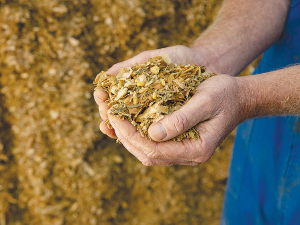Hitting heifer liveweight targets
Early December marks a key transition for many dairy farmers, as weaned replacement heifers head off-farm to grazing.
 More farmers are now carrying stored maize silage to fill early summer feed deficits prior to the next maize harvest.
More farmers are now carrying stored maize silage to fill early summer feed deficits prior to the next maize harvest.
Since the mid-nineties maize silage use on dairy farms has steadily increased, with some farmers now feeding as much as 2 tDM/cow within a season.
Initially, maize silage was mainly fed in autumn to increase lactation length, achieve body condition score (BCS) and pasture cover targets. The next progression was to carry maize silage over to the following season to support higher stocking rates, earlier calving and to feed cows better in early lactation. Finally, with greater summer pasture growth rate variability, more farmers are now carrying stored maize silage to fill early summer feed deficits prior to the next maize harvest. So, how do you get the best bang for your buck when feeding cows maize silage in summer?
Feeding Rates
Ideally, start feeding maize silage before you experience your summer feed pinch. Feeding 2-3 kgDM/cow for a longer period will help maintain a longer grazing rotation (>30 days), prevent over grazing and maintain your average pasture cover for longer. It will also reduce the likelihood of having to supplement with additional protein. During mid-late lactation cows require 14-16% crude protein in their diet. So, feeding 2-3 kgDM/cow of maize silage with a mix of pasture, grass silage and/ or other summer crops is likely to provide sufficient protein to meet cow requirements.
If you intend to feed more than 3 kgDM/cow, calculate the crude protein content of the diet using DairyNZ Feed Checker (or an equivalent feed program). You may be able to manipulate the quantities of other feeds to meet minimum protein requirements.
For more information on protein requirements in summer, check out Episode 3 of Pioneer’s Feed for thought Podcast Podcast - Pioneer
Mineral Supplementation
Maize silage has low concentrations of magnesium, calcium, sodium, and phosphorus. If maize silage makes up 25% of the summer diet or more, deficiencies in these macro minerals become more likely. However, these deficiencies are relatively easy and inexpensive to rectify (Table 1).
Table 1: Typical amount of each mineral supplement to supply with maize silage*
| Maize fed | Limeflour | Causmag | AgSalt | Dicalcium |
| 3.5 kgDM/cow | 60g | 40g | 15g | 20g |
*Laboratory testing to determine the mineral content of all feeds in the diet (including pasture) is the most accurate way to determine actual cow mineral requirements.
Minimising Wastage
Good feed-out management of maize silage is always important as losses can range from 5-40%. This difference between good and poor feed management will significantly impact your economic response to feeding maize silage. So, how do you minimise maize silage wastage?
At The Stack
Keep the face as tight as possible by only shaving or chipping enough feed for the day.
Clean up any loose material left on the ground when you’ve finished removing feed from the face.
Don’t hit the face with too much force as this can allow air to penetrate the stack and cause secondary fermentation.
Try to remove feed from across the entire face of the stack each day.
If birds are a problem, cover the face with shade cloth.
When Feeding Out
Don’t overfill bins.
Feed silage on mature grass along fence lines or in piles.
Don’t feed out more than 8 hours in advance unless your maize silage has been treated with an inoculant containing Lactobacillusbuchneri.
If you would like more information on your summer feed plan, get in touch with one of our Farm Systems specialists (visit pioneer.nz).
Wade Bell is Genetic Technologies farm systems manager. Contact him at This email address is being protected from spambots. You need JavaScript enabled to view it.
The Coalition Government will need the support of at least one opposition party to ratify the free trade deal with India.
Primary sector leaders have welcomed the announcement of a Free Trade Agreement between India and New Zealand.
At Pāmu’s Kepler Farm in Manapouri, mating has wrapped up at the across-breed Beef Progeny Test.
More than 150 people turned up at Parliament recently to celebrate the 20th anniversary of Horticulture New Zealand (HortNZ).
Biosecurity New Zealand says Kiwis should continue to keep an eye out for yellow-legged hornets (Vespa velutina) over the holiday season.
Fonterra has slashed another 50c off its milk price forecast as global milk flows shows no sign of easing.

OPINION: The release of the Natural Environment Bill and Planning Bill to replace the Resource Management Act is a red-letter day…
OPINION: Federated Farmers has launched a new campaign, swapping ‘The Twelve Days of Christmas’ for ‘The Twelve Pests of Christmas’ to…